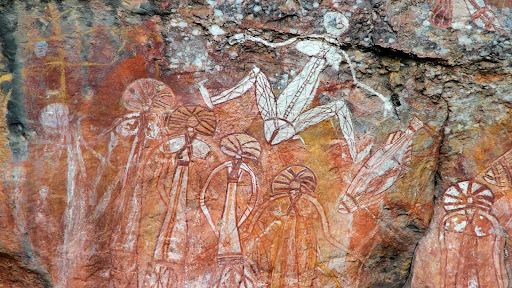Aboriginal Australian art is rightfully celebrated as one of the oldest ongoing art traditions in the world. With its vibrant colors, intricate patterns, and deep spiritual significance, this art form offers a captivating window into the rich culture and history of Australia’s Indigenous peoples. From rock paintings to contemporary canvases, Aboriginal art encompasses a variety of mediums and techniques, each with its unique story and inherent beauty. In this article, we embark on a journey through time to explore the various facets that make Aboriginal art a timeless legacy and a source of awe and inspiration in the global art scene.
The Roots of Aboriginal Art
Aboriginal art is deeply intertwined with the culture and spiritual beliefs of Australia’s Indigenous populations. It is an art form that maintains a close relationship with the traditional stories known as ‘Dreamings.’ These foundational narratives chart the creation of the world and the laws of life, portrayed through symbols, patterns, and figures that require cultural understanding to decipher. Ancient rock art, bark paintings, and ceremonial body art form the bedrock of this artistic practice, each serving as a cultural testament passed down for over 60,000 years—a timeline that attests to the resilience and vivacity of Indigenous cultures.
Styles and Techniques
Aboriginal art is not a monolith but a tapestry of styles and techniques that vary widely between communities. For instance, the dot painting technique, often seen as synonymous with Aboriginal art, hails predominantly from the Central and Western Desert regions. This technique involves creating intricate patterns and images through carefully placed dots of color, representing various aspects of the Dreamtime. On the other hand, cross-hatching or ‘rarrk’ is typical in Arnhem Land art, characterized by a series of fine lines intricately woven into complex patterns. These are not just decorative; they carry with them layers of sacred meanings that are often only fully known to initiated members of the community.

Iconography and Symbolism
The symbolic language in Aboriginal art is rich and complex, featuring a wide array of signs and symbols that can represent physical features of the landscape, plants, animals, ancestral beings, and elements of the Dreamtime. For example:
- Concentric circles may represent campsites, waterholes, or other significant places.
- U-shaped symbols often denote people sitting or gathering.
- Tracks of animals or humans may indicate the movements of ancestral beings or the passing of knowledge through generations.
- Iconic representations such as the Wandjina figures in the Kimberley are believed to be powerful spirit ancestors, creators of the land and its people.
These symbols serve as a codified lexicon that, when combined, narrate complex stories and laws, safeguarding the tradition’s oral nature in visual form.
Contemporary Aboriginal Art
The latter half of the 20th century marked a transformational period for Aboriginal art as it ventured into the global contemporary art scene. Artists like Emily Kame Kngwarreye and Rover Thomas catapulted Aboriginal art onto the world stage with their unique and powerful styles. As contemporary Aboriginal artists blend traditional approaches with modern mediums and expressions, their work often addresses social issues, identity, and the ongoing struggles for land rights and recognition. Consequently, their art becomes not only a tool for cultural preservation but also a medium for social activism and an evocative commentary on the contemporary Indigenous experience.
Preservation and Impact
The global recognition of Aboriginal art has raised questions about its preservation, ethical collection, and the importance of intellectual property rights for Indigenous artists. Efforts from within Australia and beyond aim to ensure that Aboriginal artists are fairly remunerated and that their cultural significance is respected. Additionally, the art serves as a cultural ambassador for Australia and a catalyst for dialogue regarding the country’s colonial past and the path towards reconciliation. As a beacon for cross-cultural understanding, Aboriginal art will undoubtedly continue to impact the world for generations.
Conclusion
In traversing the rich tapestry of Aboriginal Australian art, we discover more than just aesthetic beauty; we encounter the soul of a civilization, the echoes of ancient narratives, and the undying spirit of a culture that has withstood the test of time. At the intersection of tradition and innovation, Aboriginal art remains a potent force—for its communities, for Australia, and for the global art community. As each piece of art carries forward the Dreamtime into the present, it challenges, educates, and enriches all those who encounter its profound depth.
